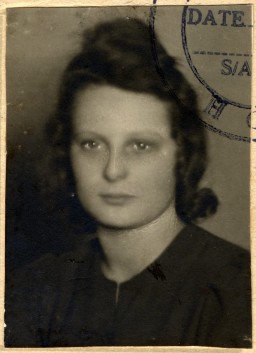You searched for: umschlagplatz
<< Previous | Displaying results 1-14 of 14 for "umschlagplatz" | Next >>
-
Abraham Lewent describes deportation to and conditions in Majdanek
Oral HistoryLike other Jews, the Lewents were confined to the Warsaw ghetto. In 1942, as Abraham hid in a crawl space, the Germans seized his mother and sisters in a raid. They perished. He was deployed for forced labor nearby, but escaped to return to his father in the ghetto. In 1943, the two were deported to Majdanek, where Abraham's father died. Abraham later was sent to Skarzysko, Buchenwald, Schlieben, Bisingen, and Dachau. US troops liberated Abraham as the Germans evacuated prisoners.
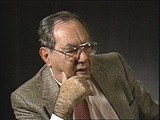
-
Abraham Lewent describes hiding during a raid in which his mother and sisters were seized for deportation from Warsaw to Treblinka
Oral HistoryLike other Jews, the Lewents were confined to the Warsaw ghetto. In 1942, as Abraham hid in a crawl space, the Germans seized his mother and sisters in a raid. They perished. He was deployed for forced labor nearby, but escaped to return to his father in the ghetto. In 1943, the two were deported to Majdanek, where Abraham's father died. Abraham later was sent to Skarzysko, Buchenwald, Schlieben, Bisingen, and Dachau. US troops liberated Abraham as the Germans evacuated prisoners.
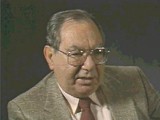
-
Assembly point in the Warsaw ghetto
PhotoAn assembly point (the Umschlagplatz) in the Warsaw ghetto for Jews rounded up for deportation. Warsaw, Poland, 1942–43.
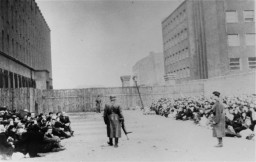
-
Vladka (Fagele) Peltel Meed describes the deportation of her mother and brother from the Warsaw ghetto to Treblinka
Oral HistoryVladka belonged to the Zukunft youth movement of the Bund (the Jewish Socialist party). She was active in the Warsaw ghetto underground as a member of the Jewish Fighting Organization (ZOB). In December 1942, she was smuggled out to the Aryan, Polish side of Warsaw to try to obtain arms and to find hiding places for children and adults. She became an active courier for the Jewish underground and for Jews in camps, forests, and other ghettos.
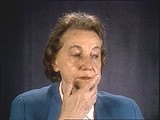
-
Deportation from the Warsaw ghetto
PhotoDeportation of Jews from the Warsaw ghetto during the ghetto uprising. The original German caption reads: "To the Umschlagplatz." Warsaw, Poland, May 1943.
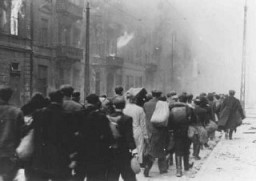
-
Deportation from the Warsaw ghetto
PhotoDeportation of Jews from the Warsaw ghetto during the uprising. The photograph was taken from a building opposite the ghetto by a member of the resistance. It shows Jews who were captured by the SS during the suppression of the Warsaw ghetto uprising marching past the St. Zofia hospital, through the intersection of Nowolipie and Zelasna Streets, towards the Umschlagplatz for deportation. Warsaw, Poland, April 20, 1943.
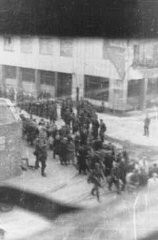
-
German soldiers interrogate Jews captured during the Warsaw ghetto uprising
PhotoJews captured by the SS during the Warsaw ghetto uprising are interrogated beside the ghetto wall before being sent to the Umschlagplatz, the assembly point for deportation from the ghetto. The original German caption reads: "Search and Interrogation." Poland, May 1943.
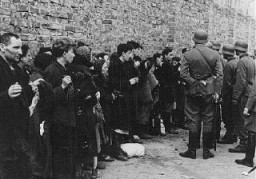
-
Roundup of Jews captured during the Warsaw ghetto uprising
PhotoJews captured during the Warsaw ghetto uprising are marched past the St. Zofia hospital down Nowolipie Street towards the Umschlagplatz for deportation.
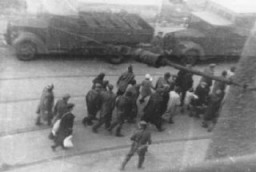
-
Deportations to and from the Warsaw Ghetto
ArticleAt its height, the Warsaw ghetto held over 400,000 people living in horrendous and worsening conditions. Learn about deportations both to and from the ghetto.
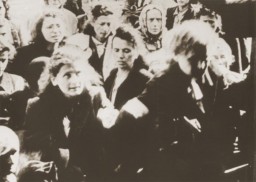
-
Janusz Korczak
ArticleJanusz Korczak ran a Jewish orphanage in Warsaw. He and his staff stayed with the children even as German authorities deported them to their deaths at Treblinka in 1942.
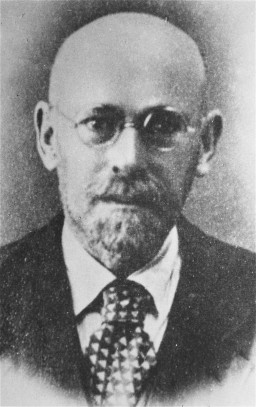
-
Warsaw Ghetto Uprising
ArticleThe Warsaw ghetto uprising was the largest, symbolically most important Jewish uprising, and first urban uprising in German-occupied Europe.
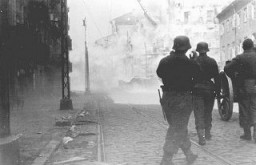
-
Ghettos in Occupied Poland
ArticleDuring World War II, the Nazis established ghettos, which were areas of a city where Jews were forced to live. Learn more about ghettos in occupied Poland.
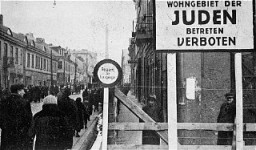
-
Deportations
ArticleAs part of the “Final Solution,” Nazi Germany organized systematic deportations of Jews from across Europe to ghettos and killing centers. Read more.

-
Estelle Laughlin
ArticleExplore Estelle Laughlin’s biography and learn about her experiences during the Warsaw ghetto uprising.
